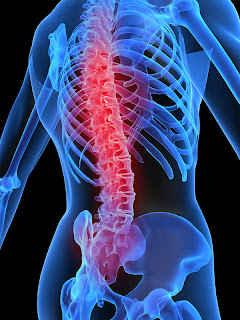
"One-armed pull-ups are very tough to do," says longtime M&F strength expert David Sandler, President and Co-Founder of StrengthPro in Las Vegas. "Especially if done truly with one arm."
This is because unlike two-armed pull-ups, your body is only connected to the bar at one point, so when you're yanking yourself up, all of the stabilizer muscles in your back and arm have to kick into gear to keep you balanced. Put another way: they're hard. If they were a ski trail, they'd be a double black diamond. With that disclaimer out of the way, Sandler has a three-step program to help you become the one-armed bodybuilding bandit you've always wanted to be.
STEP 1: ONE-ARMED LAT PULLDOWNS
3-5 sets x 2-3 reps
3-5 sets x 2-3 reps
In order to improve arm strength, you want to start by doing one-armed lat pulldowns (on a machine) to build power. "In general, you want to improve to the point where you can do 2-3 reps with 10-20% more than your body weight," Sandler says. "So, a 200 pound guy should be able to do 220-240 pounds for a couple of reps." Since the target is strength training, focus on low reps and the heaviest weight possible for 3-5 sets.
STEP 2: ALTERNATE ARM PULL-UPS

Once you can complete the above workout, you'll want to do some training on an actual chin-up bar. "When you've built up some strength from the pulldowns, the next step is to do regular pull-ups," Sandler says. "But there's a catch: Lower yourself with one arm, then pull up with two arms, alternating lowering yourself with your left and right arms." By placing the stress on your individual arms for a portion of the movement, you'll get an idea of how strong you're getting. Plus, the negatives-heavy set-up will help you to build plenty of strength for the work ahead. No rigid sets-and-reps scheme for this step—just make sure you can complete a few reps (3-5) with decent form before moving on to the big dog.
STEP 3: THE ONE-ARMED PULL-UP

"The first time you try doing a one-armed pull-up, hold the wrist of the lifting arm with your other arm and pull yourself up," Sandler explains. "Then lower yourself without using your second arm." As you get stronger, you'll find that you're using your support arm less and less. Eventually, you'll be ready to try a true one-armed pull up.
START:
Hang on a pull-up bar with one arm at full extension.
Hang on a pull-up bar with one arm at full extension.
EXECUTION:
"In the beginning, you might want to swing your off-arm to get some momentum to lift your body for your first rep," Sandler says. "After that, get your other arm out of the way and do as many as you can. Also, if you want to use a spotter, they can help by giving you a little nudge here and there, so you'll only get help where you need it and not for the full rep."
"In the beginning, you might want to swing your off-arm to get some momentum to lift your body for your first rep," Sandler says. "After that, get your other arm out of the way and do as many as you can. Also, if you want to use a spotter, they can help by giving you a little nudge here and there, so you'll only get help where you need it and not for the full rep."

WHEN: One-armed pull-ups should go at the beginning of your back day (after warming up, of course) when you're fresh because—news flash—it will be the hardest thing you do. by(http://www.muscleandfitness.com/)
















